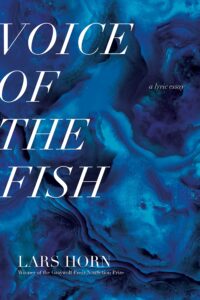
Lars Horn on the Intimate History Between Skin and Ink
“To write was, and still is, in some sense, to tattoo, to ink script upon skin.”
Midlands, UK, to Scunthorpe, UK, 2015: The radio clock glowed into the bedroom: [04:37]. I washed, dressed. Picking up my bag, I stepped into the undissolved dark of a weekday morning. Oil slick, all of it. Buildings, roads—liquefied under the weight of a winter-dead night.
At the railway station, the night staff smoked, bags readied for the end of a shift. Above the platform, a digital clock snapped seconds onto wet tarmac, left an afterglow that bled across the track. A nurse still in uniform leant against the brickwork, tugged on her coat. I blew into my hands. The sound of metal under tension echoed down the platform. A man shouldered his duffel bag. The train—dense, diesel, ferrous—roared into the station.
In the train, I pulled a book from my bag and flicked to a series of photographs in which a man stamped a river. Sat in the shallows of the Lhasa River in Tibet, Beijing-born artist Song Dong lifted a wooden seal above his head, slammed it down again. Water leapt—sudden column obscuring the artist’s face. Nearly a cubic foot in size, the seal’s base bore a carving of the Chinese character for water (shui 水). For an hour in the year 1996, Song Dong stamped the Lhasa River, printed water with its name.
*
In his article “Stigma: Tattooing and Branding in Graeco-Roman Antiquity,” C.P. Jones argues that the ancient Greek word stigma should not, as is customary, be translated “branding,” such as that by a hot iron, but as marking by ink, in short, as “tattooing.” According to Jones, branding was overwhelmingly restricted to cattle in Graeco-Roman antiquity, whereas punitive tattooing upon humans was a much more common practice. The mistranslations of stigma arose in the Middle Ages, when practices of hot iron brandings upon humans were common and tattooing was largely unknown except to travelers of Asia.
But even outside of tattooing or body modification, skin and ink share a long and intimate history, with skin frequently supplanting paper as writing support.
Recounting Xerxes’ failed crossing of the Hellespont strait, Herodotus explains how the king’s wrath was such that he commanded the waters be “whipped with three hundred lashes” and “a pair of fetters be thrown into the sea.” Herodotus continues: “I have even heard that he sent branders with them to brand the Hellespont.” Though, if one accepts C. P. Jones’s argument, Xerxes did not send “branders” to burn the sea, but tattooists to ink it.
The Hellespont, 334 BC; the Lhasa River, AD 1996: tattoos carrying across the world’s waters, morphing to waves, slow swirl of circular currents.
*
The oldest tattoos on record—fixed upon bodies of skin rather than water—belong to the mummified corpses of Scythians held in the State Hermitage’s Department of Archaeology of Eastern Europe and Siberia, in St. Petersburg, Russia. Excavated by Sergei Ivanovich Rudenko between 1947 and 1948, three of the four bodies—one man and two women—were found in the Pazyryk barrows of the Altai Mountains in Siberia. The bodies date from the fifth to the third centuries BC. The final mummy held at the Hermitage was discovered by L. R. Kyzlasov in 1969 amidst a Khakassian burial site from the 1st century AD.
Hermitage restorers found the tattoos by accident in 2003–2004. Peeling back the Khakassian mummy’s clothing, they uncovered indistinct blue drawings. After consulting with forensic scientists from the Military Medical Academy, the Hermitage laboratory staff photographed the mummies with infrared rays.
The technique detected and clarified the tattoos based on the soot present within their ink: Tigers attacked horses; leopards pursued mountain sheep. Birds soared beside their hybrids—hoofed animals with beaks, occasional wings. In the dimness of a laboratory, some two thousand years since their being inked, scenes of mauling, of magic, a bestiary of real and mythical creatures sprang once more into vivid, ferocious life.
*
Indelible ink was originally created not for paper, but for human skin. Invented in 1962 by the National Physical Laboratory in Delhi to combat voter fraud, indelible ink contains silver nitrate in addition to pigments of either violet, black, or orange. Silver nitrate reacts with the salts in human skin to create silver chloride, marking the voter’s hand until the inked skin cells are shed. This can take anywhere from a couple of days to several weeks.
But even outside of tattooing or body modification, skin and ink share a long and intimate history, with skin frequently supplanting paper as writing support. Employed alongside papyrus in ancient Egypt, the oldest animal skin or “parchment” scroll dates to 2550–2450 BC. The use of parchment and vellum—parchment’s more refined, calfskin counterpart—spread across the Middle East by the sixth century BC. From the 6th century AD to the 14th century AD, animal skins were the support of choice in Europe. To this day, vellum is used for the creation of handwritten Torah scrolls and the writing of parliamentary acts by the governments of Ireland and Great Britain.
As much as tattoo cultures are rooted in the arts—drawing, engraving, carving—writing cultures are rooted in skin, in ink scored across flayed, soaked, dehaired, and stretched hide. To write was, and still is, in some sense, to tattoo, to ink script upon skin.
*
After three trains, a dozen stops, and several hours of slithering through a lightless morning, the train screeched into Scunthorpe station. On Station Road, a string of tinsel bunting zigzagged over a vacant lot, its line slack, its metallic fronds weathered and gapped. A Union Jack fluttered beside red and yellow acrylic: SCUNNY CAR WASH. On the high street, a man waited for the bet shop to open. A sales assistant dragged a swing sign onto the pavement. I kept walking, watched as, beneath the words KING KEBAB, a neon carving knife cut slices from imaginary meat.
As much as tattoo cultures are rooted in the arts—drawing, engraving, carving—writing cultures are rooted in skin, in ink scored across flayed, soaked, dehaired, and stretched hide.
A buzzer drilled me into the shop. The door closed with a jolt, sent a breeze coiling across floorboards right up to where an Anglepoise glowed atop a wooden counter, dust spiraling through its beam. A man called over his shoulder: “Just a moment.” I scanned the room. Framed tattoo designs crowded the black walls: snakes slinked from skull eye sockets; MUM fluttered over bleeding hearts, sagged between swallows’ beaks.
A fluorescent green cobra hissed across the man’s bicep. Purple dice tumbled down his forearm. The man straightened: “Right, how can I help?” I took the appointment card from my pocket, slid it across the counter. The man nodded: “Yes, you’re the one who only wants text,” the man tapped the card against the wood and walked over to a doorway, “unusual that, we get a few names or quotes, but all text—we’ve not had that before.” Pulling aside a bead curtain, the man gestured: “Straight up the stairs, first chair on your right. Jay’s got the transfers ready for you.”
Four leather tattoo chairs occupied the attic room. Drafting tables lined the walls, submerged beneath inks, needles, vinyl gloves. At the far end, floor to ceiling windows looked onto the street below: women pulled tartan shopping caddies, smoked on benches. I stepped up to the first chair, my breath faintly clouding. Jay clicked on an electric heater: “Lars, right? Sorry about the cold, no central heating.”
Taking a sponge in one hand and a Bic razor in the other, Jay daubed soapy water across my shoulder blade, drew the razor over skin. He wiped, resoaped the shoulder: “Right, stand for this.” I swung my legs off the reclined chair. Jay picked up a sheet of what looked like carbon paper: “Try to ignore the water and relax you shoulders. The skin needs to sit naturally, otherwise the print will go askew.” Jay placed the hectograph over the wet skin, smoothing the paper until it molded to the shoulder blade.
Language overwrites the body, negates its power as corporeal access point and expressive medium with the world.
Peeling back the transfer, he nodded to a couple of full-length mirrors: “Check the placement’s good. Don’t worry if not, we’ll rub it clean with alcohol and reprint.” Standing between the mirrors angled so I could see my back, I stared at my reflection in the glass, stared as purple text hovered amidst patina, dust, paint splats. Akin to carbon paper, hectograph paper allows tattooists to transfer a design onto a client’s skin—a nonpermanent outline over which a tattooist can ink. I lifted my arm. The lettering twisted, my skin more mobile than I’d ever realized, elastic, migratory, animal even.
I returned to the chair. Jay swiveled on his stool to face me: “All good? Great. If you lie down with your arms by your sides, that way you won’t stretch the skin out of place. We don’t want the ink traveling, enlarging onto the ribs.”
The leather chair pressed cold against my jaw. My head to one side, I looked at the designs in progress crammed across the walls: Shishas—beasts part dog, part lion—emerged from lotus flowers. Koi circled cherry blossoms. In one corner, scarab beetles scuttled—majestic, iridescent—from Anubis to Jörmungandr, from one world’s jackal to another’s serpent. The tattoo machine hummed above me. A fan heater lifted a few of the drawings’ edges, tigers and dragons roaring in waves. The humming changed frequencies. I exhaled as the needle dragged its first line into my skin.
*
In a retrospective monograph of his work, Zhang Huan discussed his move from the flat surface of oil painting to the embodied form of performance art:
I had discovered that my body could become my language, it was the closest thing to who I was and it allowed me to become known to others. I had been struggling with how to move from the two-dimensional, and then I discovered this new vehicle, my body.
12 Square Meters, 1994: In Dashancun Village, an east Beijing suburb used as the city’s dumping ground, Zhang Huan covered his naked body in a paste of fish oil and honey. For the next hour, Zhang Huan sat—glossy, rancid, immobile—in the mouth of an open pit public latrine. Flies swarmed his body, crawled into his ear canals, into his nostrils, thrummed between the fine hairs of his skin. Maggots inched across the floor. Mosquitoes rose and fell, sluggish in the cloying midsummer heat. Insects flicked from Zhang Huan’s body to urine, feces, to soiled paper, and cigarette butts. Zhang Huan then walked from the latrine into a nearby pond, insects rippling off his body in rings.
65 Kilograms, 1994: White sleeping mats covered Zhang Huan’s studio floor. Viewers sat, watched Zhang Huan’s naked body sway ten feet above them, a smell of disinfectant settling over window ledges, piling into the creases of their own clothing. Gagged, bound, and hoisted into the ceiling by chains, Zhang Huan looked back—suspended face down, above a hotplate. A doctor climbed a ladder, inserted an intravenous line. Blood flowed into a plastic bag, dripped several feet, splashing into a metal pan atop the hotplate. For an hour, blood hissed on scorching metal, the room clouding with the vapor of Zhang Huan’s frying blood.
Pilgrimage–Wind and Water in New York, 1998: P.S. 1 Contemporary Art Center courtyard. A Ming-dynasty daybed laden with slabs of ice. Tethered to the daybed, purebred dogs barked across a soundtrack of Tibetan prayer chants. Prostrating himself naked upon the gravel, Zhang Huan crawled to the bed and lay atop the ice, dogs and winter winds howling about his limbs.
Family Tree is read as an obliteration of the individual by cultural and sociohistoric context. It is understood as an enactment of language obscuring, even dominating, the corporeal.
In 2001, Zhang Huan dramatized the tension between two-dimensional and three-dimensional art forms in the performance piece Family Tree, a work that explored the power dynamics between individual and cultural identity, between body and language.
Having recently moved to the United States, Zhang Huan commissioned three calligraphers to cover his face in culturally specific references. For several hours, calligraphers wrote Chinese proverbs, quotations from Chinese literary texts, the names of Zhang Huan’s relatives, familial anecdotes, and words from the ancient Chinese art of physiognomy onto the artist’s face. Documented in nine photographs at timed intervals, the writing increasingly mottles Zhang Huan’s skin, blotches, obscures, until, eventually, it covers every facial feature. In the final image, Zhang Huan’s face shines with fresh black ink.
Interpretations of this work tend to foreground the culturally constructed nature of individual identity. In its presentation of the piece, the Metropolitan Museum of Art writes: “Rather than elucidating Zhang’s character and fate, these traditional divinatory marks ultimately obscure his identity beneath a dense layer of culturally conditioned references.”
Similarly, Phillips auction house remarks: “Ironically, the two practices in this work that are most deeply embedded in Chinese culture, calligraphy and physiognomy—or ‘face reading’—nullify each other. When they are applied as a visual lexicon to Zhang’s face, he is stripped of all his identifiable markers. The nine photographs of Family Tree transform viewers into participants, allowing them not only to engage with Zhang’s performance, but to reflect upon their own intrinsic and constructed identities.”
Family Tree is read as an obliteration of the individual by cultural and sociohistoric context. It is understood as an enactment of language obscuring, even dominating, the corporeal. Language overwrites the body, negates its power as corporeal access point and expressive medium with the world. Critics rarely address the discomfort of the latter images: how, saturated in ink, Zhang Huan’s face jolts the entire performance into the iconography of blackface.
Language might obliterate Zhang Huan’s physical form, but the body cannot be controlled so easily. Despite the artist’s conceptual intentions, his body carries the work into unwanted territory. Unruly, unforeseen by Zhang Huan, and unaccounted for by critics, the inked-out body migrates the piece from conceptual meditation on selfhood into racist lineage. Far from obliterated, unable to signify, or subservient to language, the artist’s body speaks louder than any calligraphy. It screams.
___________________________________

Excerpt from Voice of the Fish. Copyright © 2022 by Lars Horn. Reprinted with the permission of Graywolf Press, Minneapolis, Minnesota.
Lars Horn
Lars Horn is a writer and translator working in literary and experimental non-fiction. Their first book, Voice of the Fish, won the 2020 Graywolf Nonfiction Prize and was an American Booksellers Association Indies Introduce Selection. The recipient of the Tin House Without Borders Residency and a Sewanee Writers’ Conference scholarship, Horn’s writing has appeared or is forthcoming in Granta, the Virginia Quarterly Review, the Kenyon Review, and elsewhere. Initially specialising in Phenomenology and Visual Arts scholarship, they hold MAs from the University of Edinburgh, the École normale supérieure, Paris, and Concordia University, Montreal. They live in Miami with their wife, the writer Jaquira Díaz.



















